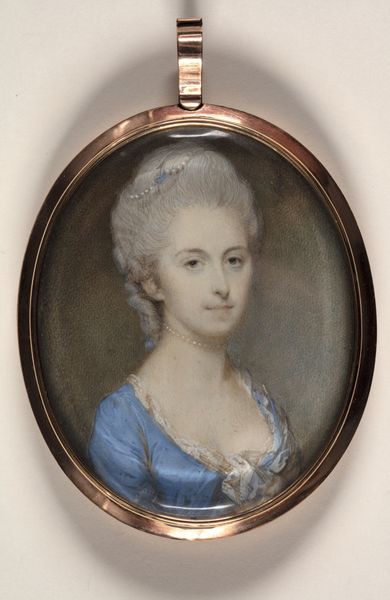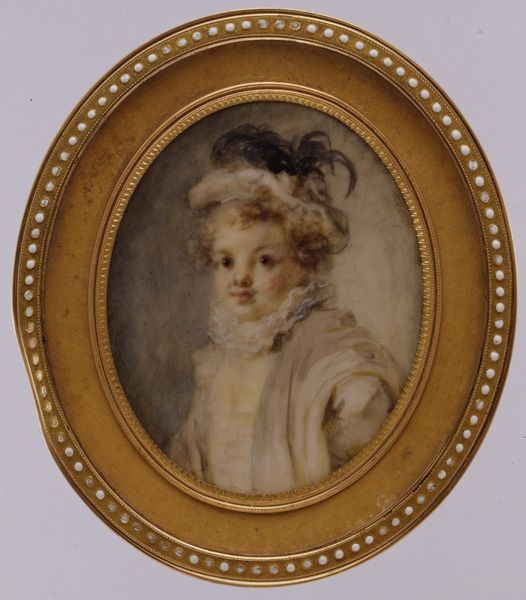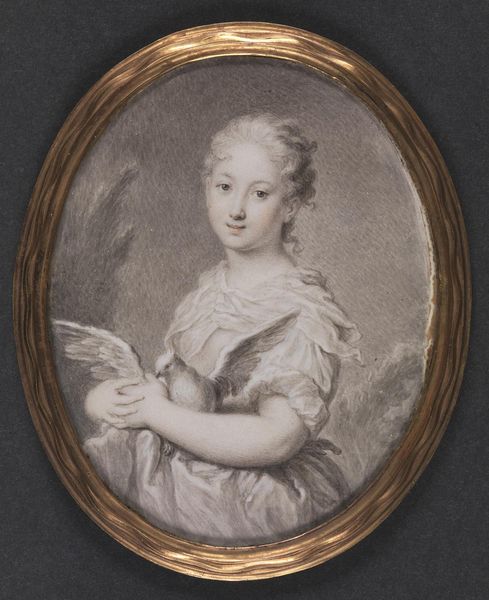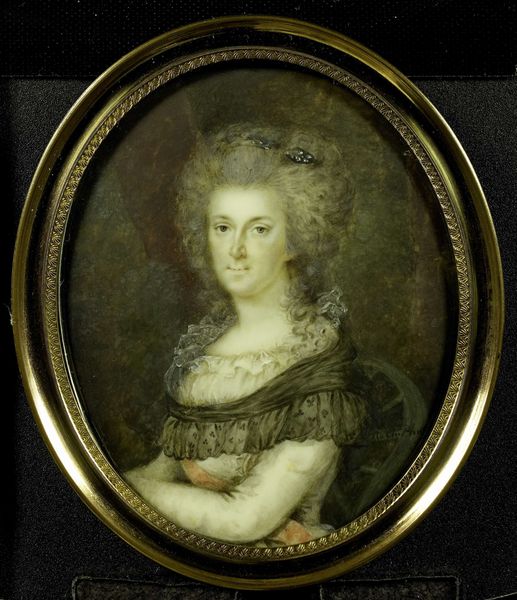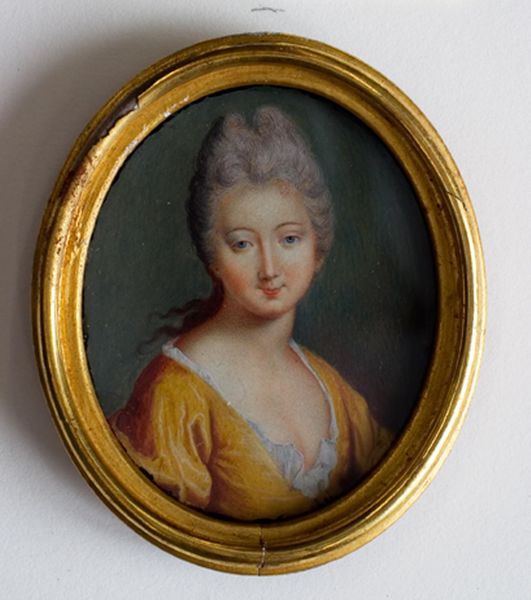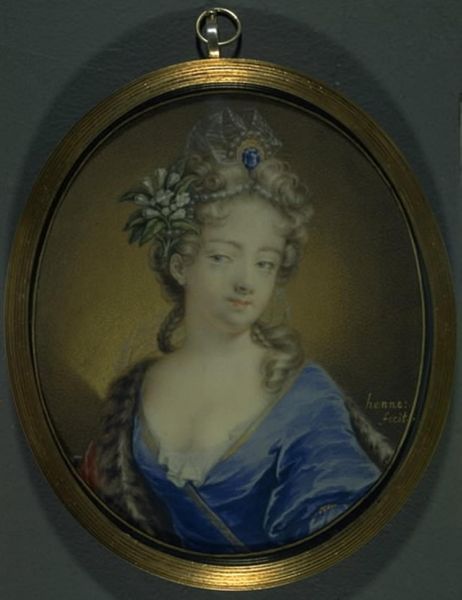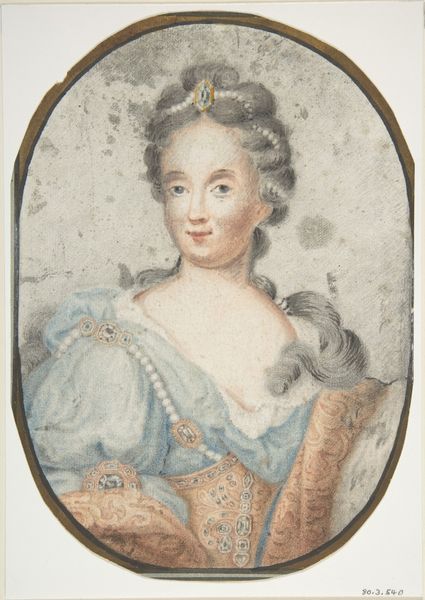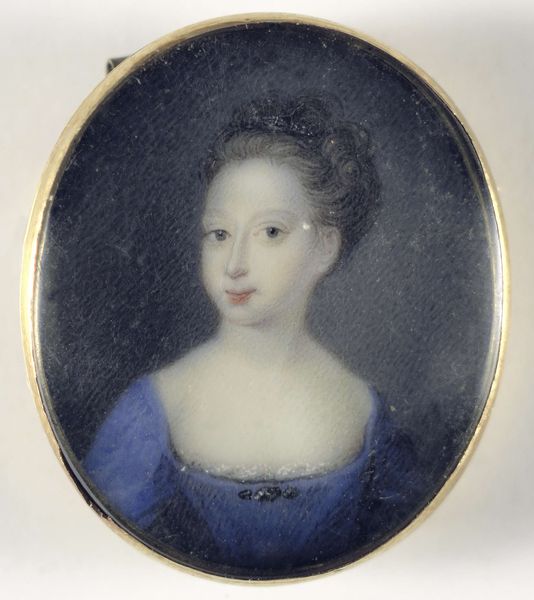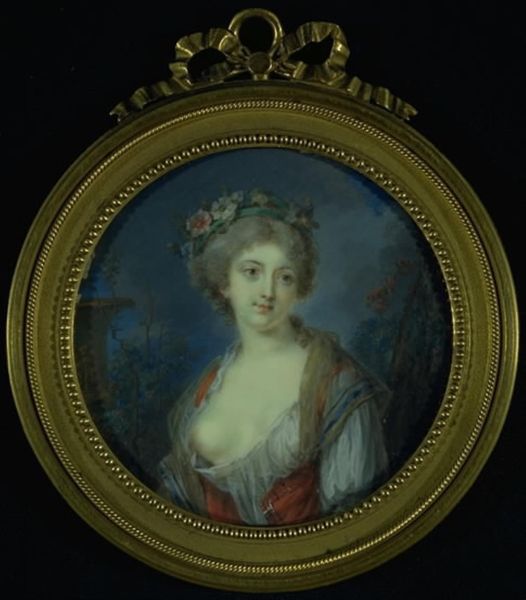
painting, watercolor, ivory
#
portrait
#
painting
#
watercolor
#
ivory
#
miniature
#
rococo
Dimensions: 8.7 cm (height) x 6.7 cm (width) (Netto)
Curator: This is "Copy after Rosalba Carriera. Chastity" attributed to Cornelius Høyer, made in 1767. It's a miniature portrait rendered in watercolor on ivory, currently held here at the SMK. Editor: My first impression is just how delicate it is. The colours are so muted, it's almost like a whisper. And the tiny scale—it really invites intimacy. Curator: Absolutely. Miniatures like these were often incredibly personal objects, circulating within families or among close friends. Think about the labor involved. Painting with watercolor on ivory demands a painstaking process of layering and detail. It's not just art; it's meticulous craft. Editor: That connects with the role these objects played. Often they were commissioned as sentimental mementos. This was also at a time when ideals about femininity were intensely scrutinized and performed, think of her association with the dove, reinforcing social values around modesty. Was there an official industry behind them, a specific network of craftspeople involved? Curator: Most definitely. The Rococo style here emphasizes the taste for luxury items among elite members of society and royal patrons in this period. Workshops and ateliers often existed catering to portraiture miniature as status objects to cement alliances between notable families. Materials like ivory also had a particular commodity value for production. Editor: And how does the museum setting affect our reading of it? Is this act of exhibiting this work a preservation of gender ideals in the public imagination? It highlights that ongoing dance between individual identity and socially imposed roles. Curator: A very valid point. Displaying it in the context of the museum certainly solidifies its art historical value and also invites ongoing scrutiny about representation across the centuries. It can be interpreted and reinterpreted in so many ways, from gender expectations to material realities to personal connections. Editor: Considering it through that lens, it really underscores the ways in which art operates within both intimate spaces and broad societal structures. Curator: Precisely. A fascinating blend of personal connection and political forces.
Comments
No comments
Be the first to comment and join the conversation on the ultimate creative platform.
